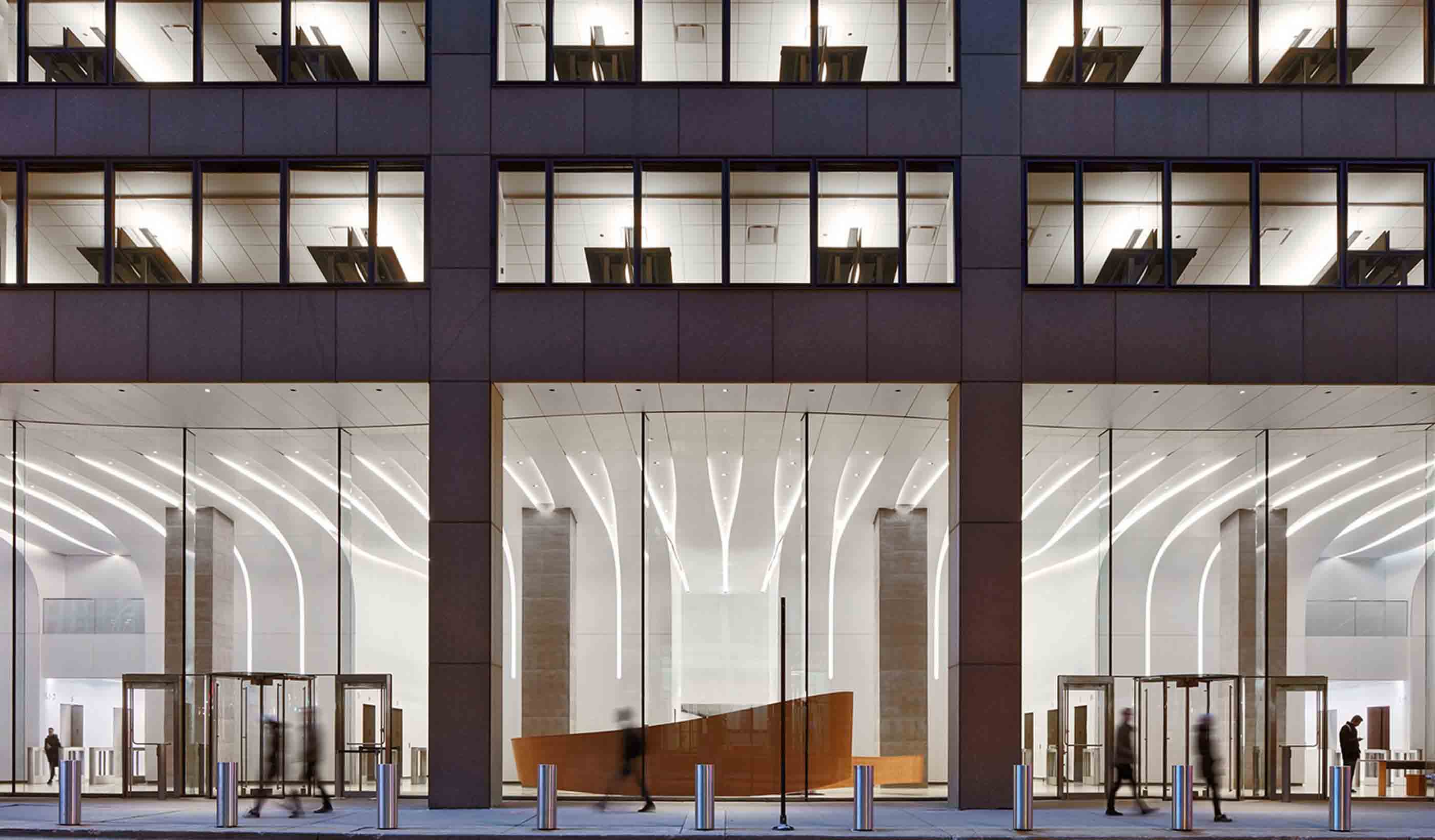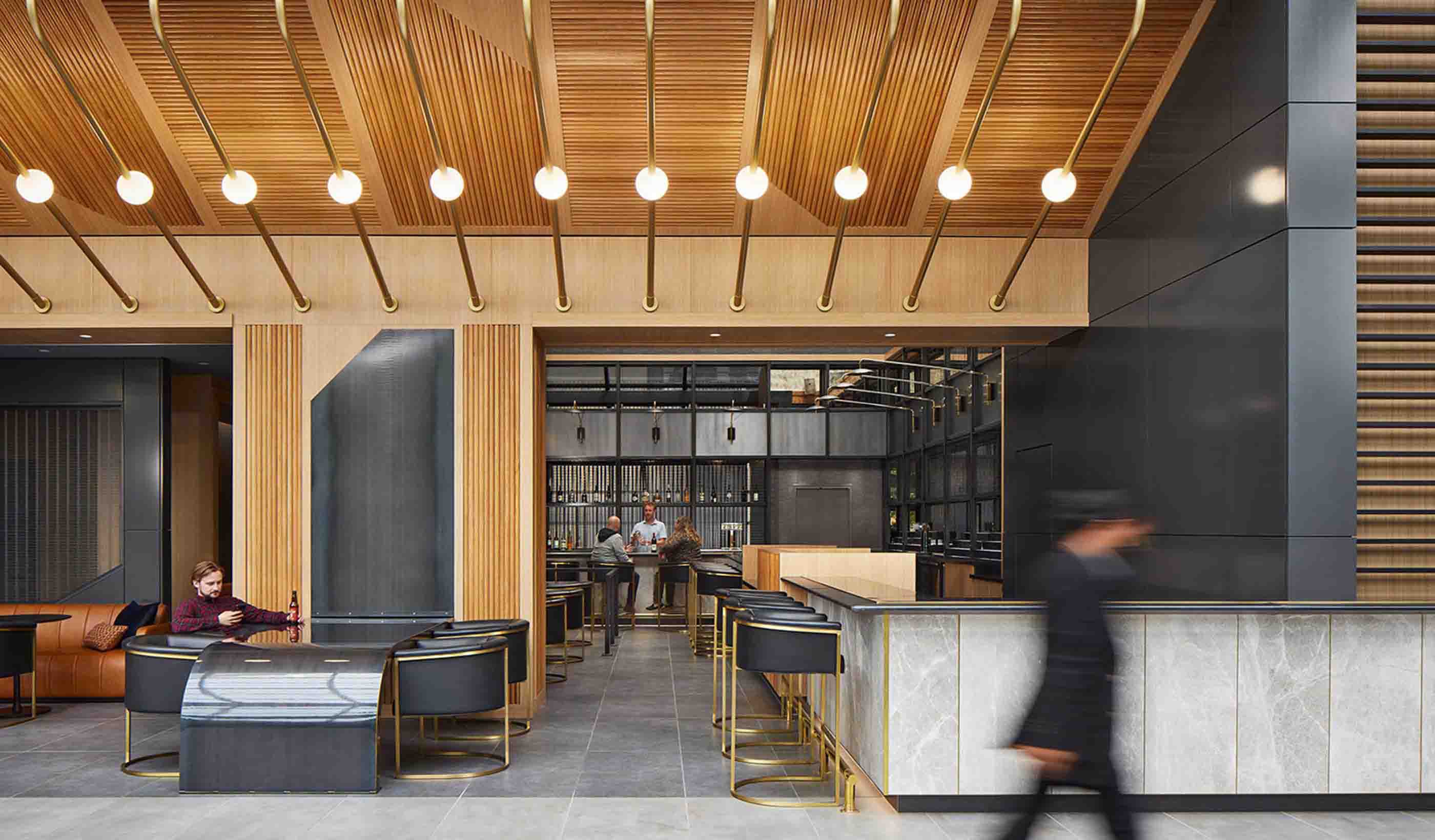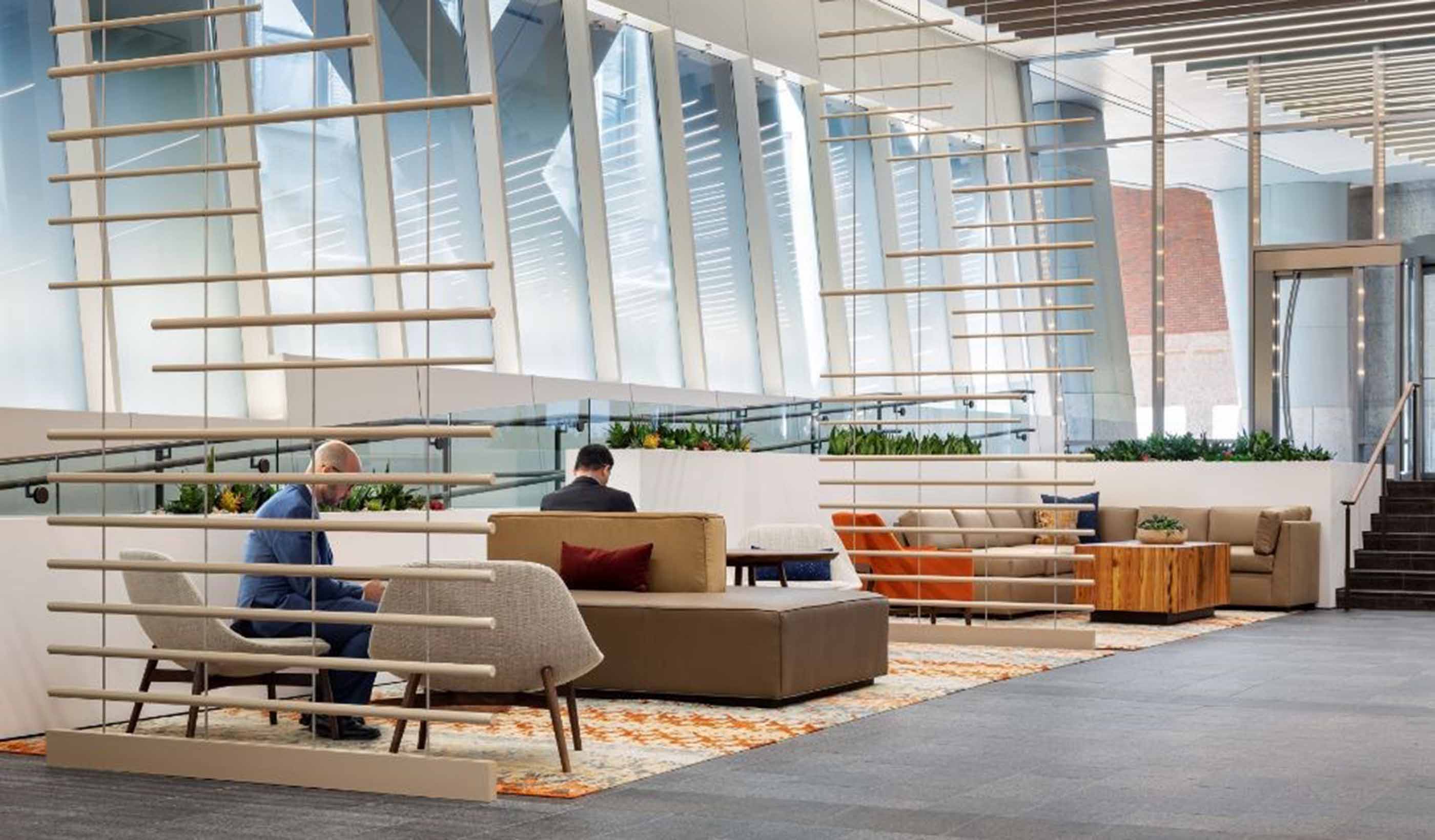Office building asset repositioning: What should you look for?
August 22, 2024
August 22, 2024
In a challenging market, what does it take to turn around an aging office building?
A version of this blog first appeared as “What to look for in asset repositioning” in Design Quarterly Issue 21.
It’s a challenging time for asset repositioning, but there are still ways to maximize the value of office buildings.
Asset holders in commercial office buildings are facing financial pressure and uncertainty. Their office space occupancy rates were destabilized due to the widespread work cultural change brought on by the pandemic. With remote and hybrid work, a lot of older office spaces is now superfluous. According to the Mortgage Bankers Association, an estimated $1.2 trillion of commercial real estate debt in the US is maturing in the next two years, and roughly 25 percent of those loans are to the office and retail segments. But commercial real estate prices are down in many cities. Buildings are selling at massive discounts. Researchers estimate that the national office market lost $664 billion from 2019 to 2022.

A lobby repositioning and expansion for 10 South Wacker Drive in Chicago, Illinois. (Joint Venture/Association/Collaboration: Tishman Speyer; Architect of Record: Krueck Sexton Partners)
It might look like pivoting away from office buildings and investing in a mixed-use occupancy scenario is a natural step for these owners. Rebalancing their dependence on office space to include residential, retail, and entertainment sounds wise. And it may be for some if the conditions are right. But redesigning and repositioning assets for mixed-use is complicated. The owner and designer must address zoning, construction codes, complex infrastructure enhancement, and high construction costs on these projects. Moreover, the debt underwriting necessary to get such projects off the ground can be difficult for them to secure. Investors need to show potential for a strong return on investment.
These assets are often in dense urban areas where space is in high demand. It might appear that owners can invest in asset repositioning and design and find the market later—the “build it and they will come” model. But in today’s environment (with high interest rates), these owners can’t afford the potential risk of forward-looking returns. They are content to wait for the office market to change direction or, in some cases, accept that the asset moves into receivership and move on.
The most difficult scenario for owners occurs when the assets are partially stabilized. Maybe they are still being used for workplaces. It can be challenging and expensive for an owner to reposition an occupied mixed-use property. The prime opportunities for repositioning are in assets that are 100 percent destabilized. They’re a blank slate. Owners can more easily analyze and convert these properties to different uses, which can include science and technology (S&T), institutional, or residential.
What uses should they look at for aging office buildings?
What about the S&T market? Aren’t labs in high demand in many places? They have been and may still be. So, it’s worth looking at S&T for reuse and asset repositioning projects. But one should keep a few things in mind: S&T laboratory spaces have special demands that require specialized spaces. These labs need higher floor-to-floor heights, specialized infrastructure for mechanical, electrical, and plumbing systems plus structural and vibration considerations. They may not make especially good neighbors with residences, hotels, or other uses—so zoning can be an issue.
The market for specialized use projects such as S&T labs can be narrow and competitive.

The redesign of the Capital Center in Indianapolis, Indiana, included activating the public spaces.
What kind of locations are best for asset repositioning?
Great location is the key to asset repositioning. What makes a great location? Proximity to transportation and desirable retail. Also, it’s helpful to be near cultural spaces, parks, and gyms.
For example, our teams worked on the Monroe Hotel and Residences in Chicago, Illinois, and the Preston Centre in Columbus, Ohio. They are both in vibrant downtowns. And they’re designed to excite further diverse development in their cities.
Location can determine the business case. Mall redevelopment projects often have good financial viability. Places like the Amazing Brentwood in the greater Vancouver, British Columbia, area work because they are in highly desirable locations where the land is valuable. For this BC project, we helped turn a former mid-century mall into a vibrant new mixed-use community. The addition of new mass transit nearby has made that location even more attractive.
Suburban office parks may or may not have the potential for asset repositioning. Are they in a great location with some of those desirable amenities nearby? Are they well positioned in terms of transit, parking, and highways? Are they on valuable real estate? Do they qualify for investment in asset repositioning or are they better suited as candidates for an upgrade?
The answers help determine the value. And it depends on local market demand.
1. Know their assets and local conditions. Knowledge is power here. It’s key that developers understand the challenges and opportunities in their assets. That better prepares them to look at reuse options. This starts with examining the existing state of the asset. They should consider the building’s structural system, utility infrastructure and capacities, occupancy classification, and capacity. They should know of any debt obligations and the zoning on the property. They also should meet with local regulatory officials. That meeting will help them to understand the flexibility of the local ordinances for repositioning when a change of use could help respond to local market conditions.
The prime opportunities for repositioning are in assets that are 100 percent destabilized.
2. Explore the possibilities based on the local market. Evaluate the potential reuse options for their assets. These can include life sciences, institutional, residential, or mixed-use. Analyze the market demand, the going rate for leasable space, and the return on investment for each option. Understand what makes the neighborhood desirable.
3. Create visuals. If due diligence shows an asset is a good candidate for repositioning, a client may be ready to test the waters. They might even consider developing visuals (branding or architectural renderings, for example). Those visuals could feature a design vision for the property’s new use.
4. Look for financial incentives for building reuse. City and municipal governments want to encourage development in their business districts. They are looking for more affordable housing or they want to see more walkable neighborhoods. For those reasons—and as a response to a flight of tenants to high-quality new buildings elsewhere—Chicago has unlocked financing for asset repositioning projects in its LaSalle Street Historic District. The Monroe project is in this district. The city wants to encourage dynamic adaptive reuse. Other cities may follow suit.

Lobby renovation of 33 Arch Street in Boston, Massachusetts. Our team’s updated design maximized light, texture, and elements from nature to rejuvenate one of Boston’s premier office towers.
Some investors see value in the down market. One of New York City’s biggest developers has teamed with an investment manager to buy $1 billion in distressed, high-quality offices. With some help in the form of fresh capital or debt restructuring, these class-A properties can compete with new, modern towers.
5. Keep an eye on changing conditions. The outlook for asset repositioning could change. Markets for office space can differ wildly from location to location. Everything from materials pricing to interest rates can fluctuate and change the metrics for your project. Current conditions for asset repositioning are challenging, but there are bright spots for those paying attention. The savvy commercial building owner who does their due diligence has the chance to bring new life and revenue to their property through asset repositioning.